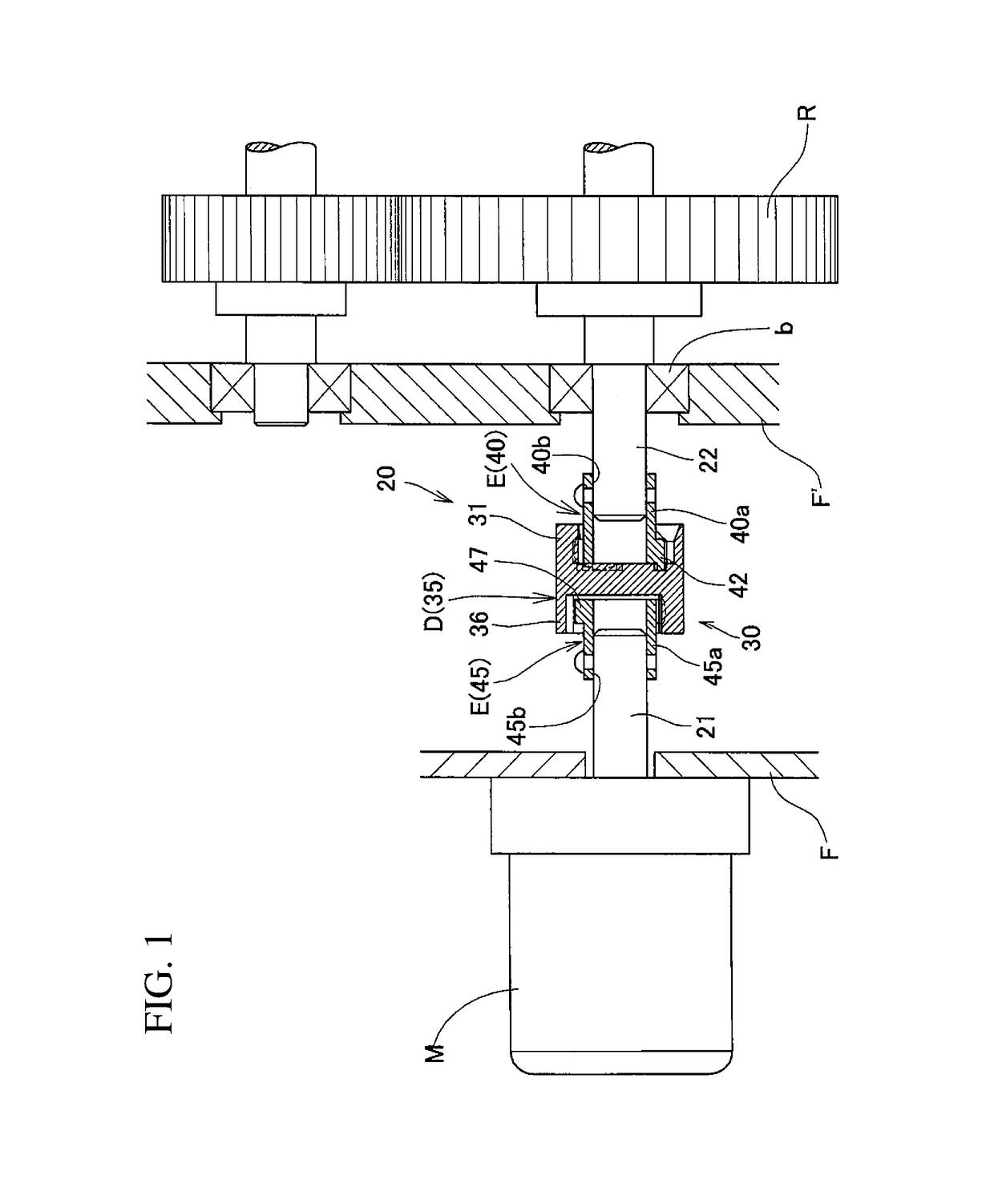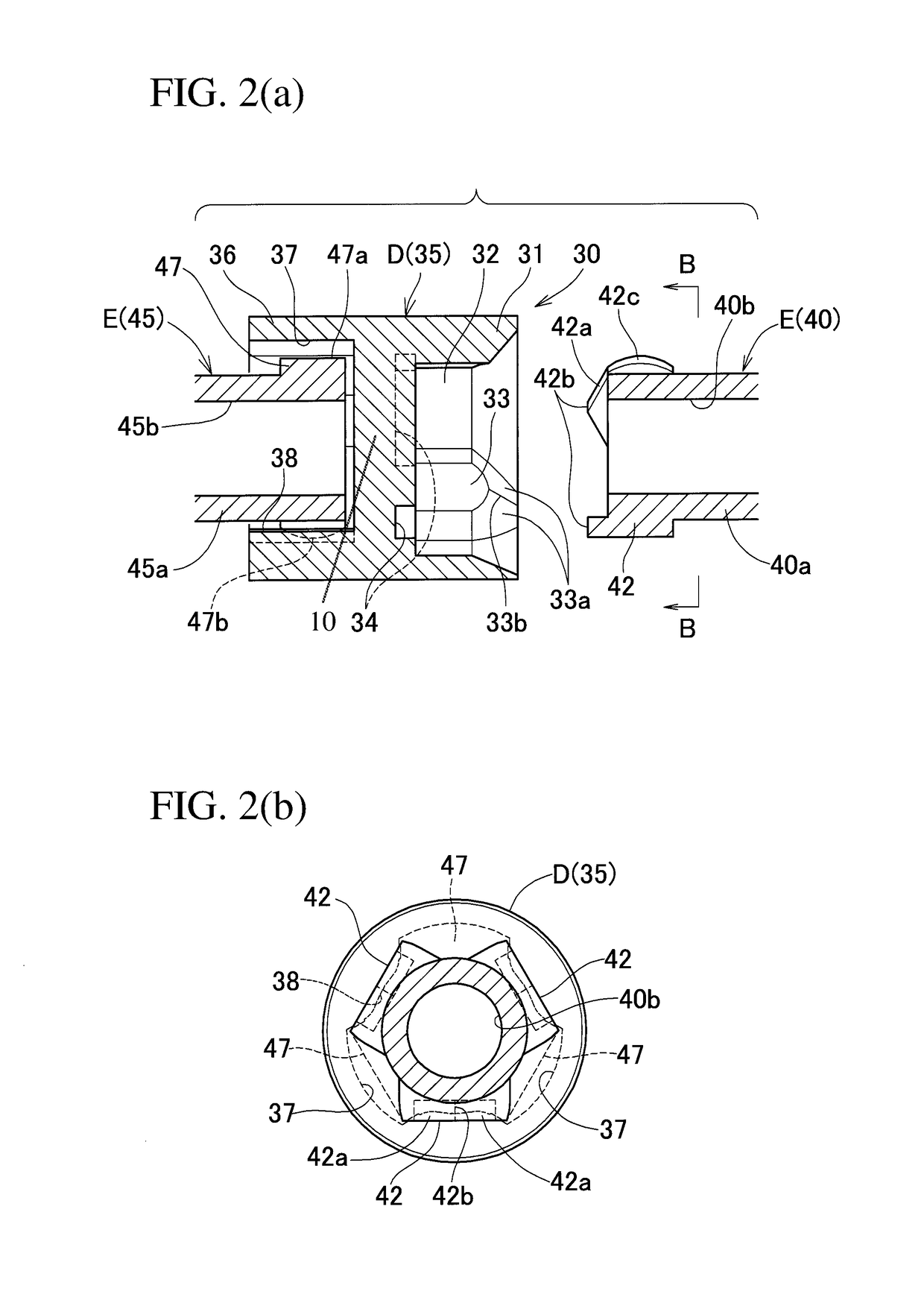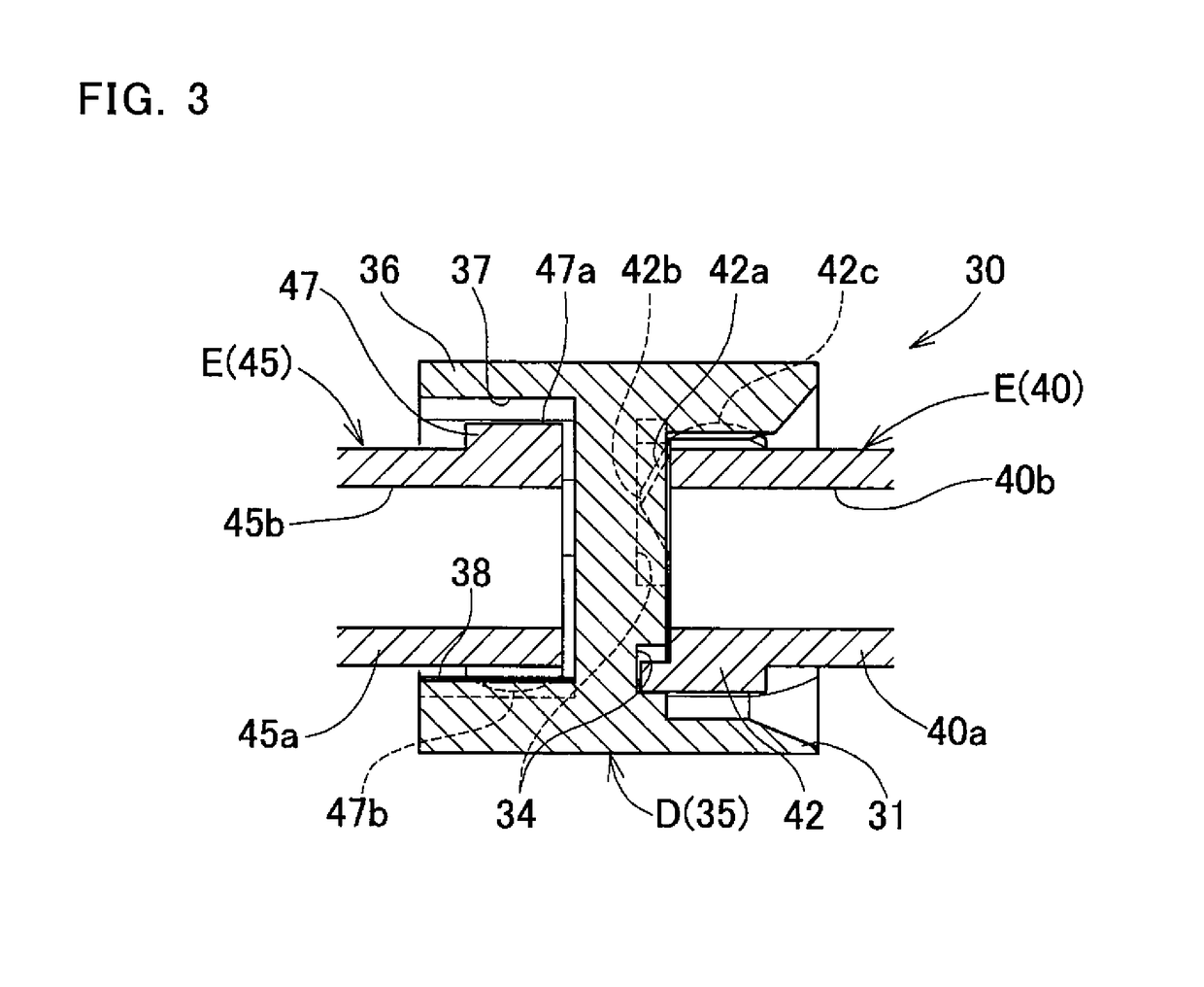Tripod-type constant velocity joint
- Summary
- Abstract
- Description
- Claims
- Application Information
AI Technical Summary
Benefits of technology
Problems solved by technology
Method used
Image
Examples
first embodiment
[0078]FIG. 1 illustrates a portion of a rotation transmission mechanism in which a tripod-type constant velocity joint according to the first embodiment of the present invention is used. This rotation transmission mechanism includes a rotary portion R provided with gears through which driving force is transmitted, a driving source M comprising a motor configured to rotate the rotary portion R about the center axis of the rotary portion R, and a driving force transmitting device 20 through which driving force is transmitted from the driving source M to the rotary portion R.
[0079]The driving force transmitting device 20 includes a coupling member comprising the tripod-type constant velocity joint of the first embodiment, through which a driving shaft 21 extending from the driving source M is coupled to a driven shaft 22 (hereinafter sometimes referred to as the “rotary member shaft 22”) extending from the rotary portion R. The coupling member 30 functions to transmit the rotation of t...
second embodiment
[0109]FIG. 7 illustrates a coupling means 30 according to the second embodiment of the present invention. This coupling means 30 is constituted by an intermediate member D, a first shaft end member E connected to the end of the intermediate member D on the side of the rotary member shaft 22, and a second shaft end member E connected to the end of the intermediate member D on the side of the driving shaft 21. The intermediate member D comprises an outer ring 31 arranged on one axial side thereof, and a tripod member 45 arranged on the other axial side thereof. The first shaft end member E comprises a tripod member 40 connected to the outer ring 31, and the second shaft end member E comprises an outer ring 36 connected to the tripod member 45.
[0110]The connection structure between the tripod member 40 and the outer ring 31, which is located on one axial side of the intermediate member D, and the connection structure between the outer ring 36 and the tripod member 45, which is located ...
third embodiment
[0114]FIG. 8 illustrates a portion of a rotation transmission mechanism in which a tripod-type constant velocity joint according to the third embodiment of the present invention is used. This rotation transmission mechanism includes a rotary portion R provided with gears through which driving force is transmitted, a driving source M comprising a motor configured to rotate the rotary portion R about the center axis of the rotary portion R, and a driving force transmitting device 20 through which driving force is transmitted from the driving source M to the rotary portion R.
[0115]The driving force transmitting device 20 includes a coupling means 30 comprising the tripod-type constant velocity joint of the third embodiment, through which a driving shaft 21 extending from the driving source M is coupled to a driven shaft 22 (hereinafter sometimes referred to as the “rotary member shaft 22”) extending from the rotary portion R. The coupling means 30 functions to transmit the rotation of ...
PUM
 Login to View More
Login to View More Abstract
Description
Claims
Application Information
 Login to View More
Login to View More - R&D
- Intellectual Property
- Life Sciences
- Materials
- Tech Scout
- Unparalleled Data Quality
- Higher Quality Content
- 60% Fewer Hallucinations
Browse by: Latest US Patents, China's latest patents, Technical Efficacy Thesaurus, Application Domain, Technology Topic, Popular Technical Reports.
© 2025 PatSnap. All rights reserved.Legal|Privacy policy|Modern Slavery Act Transparency Statement|Sitemap|About US| Contact US: help@patsnap.com



